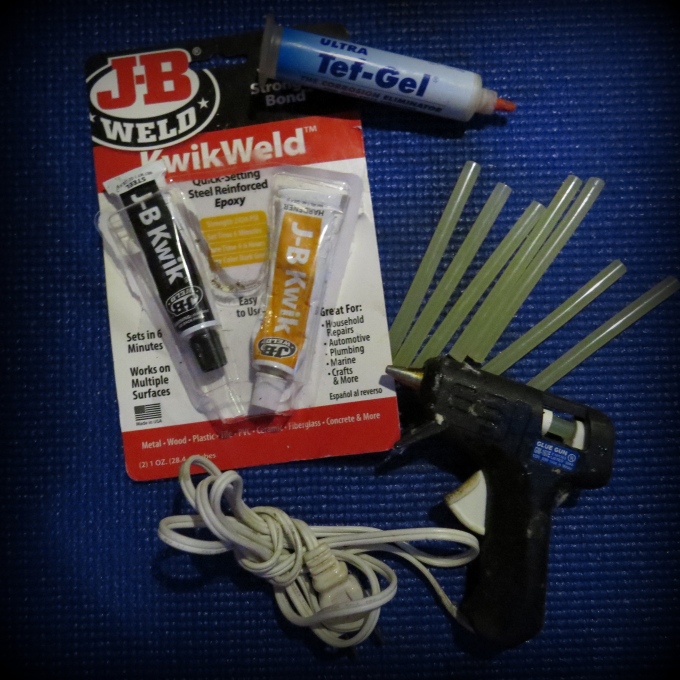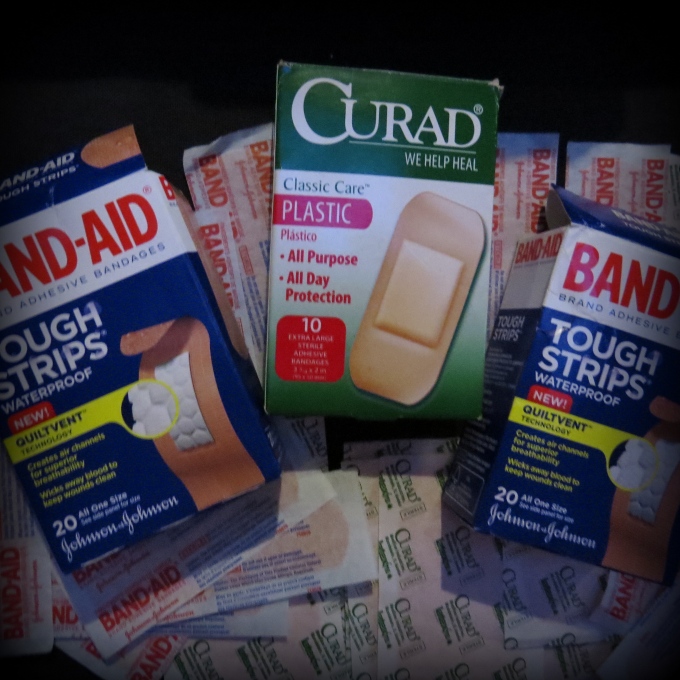The Blue View - Sticky Stuff
/In a recent Blue View, I extolled the virtues of WD-40 and duct tape, two essentials for the yachtie's tool kit. As I was writing it, I thought about all the other sticky stuff I use routinely on Nine of Cups, without which, I seriously wonder whether I could keep the old girl afloat. Here is my list of the top 10 sticky substances most used aboard Nine of Cups.

Duct tape. I've already talked about duct tape and some of its many uses aboard. It's been used by sailors for a long time – I'm pretty sure Ulysses used duct tape to lash himself to the mast as he sailed past the Sirens. Seriously, it is good for temporary fixes and stopping leaks until proper repairs can be made. It does have a few shortcomings – it doesn't stick well to wet surfaces and if left in the sun for more than a few hours, it leaves a residue that is hard to clean up – but I think this is one of the 2000+ uses of WD-40.
Sikaflex 291/292/3M-5200. These are polyurethane based adhesives, sealants and bedding compounds. I always have a tube or two aboard. In the time we've been here in Durban, I've used almost a whole tube to re-bed, seal around, and/or stop leaks with two hatches, one rope clutch, the instrument box, a new propane regulator, and one leaking portlight. Plus, I think I could use it to seal all my body orifices if ever I found it necessary to take a dip in the smelly, oily water here in the marina.
J.B. Weld - 5 Minute Epoxy. Great for temporary fixes and the occasional permanent fix. I've used it to reattach the internal magnets in our wind generator, temporarily seal a small leak in a fuel tank, and hold two fiberglass parts together long enough to make a more permanent glass and mat repair.
West System Epoxy. I have the gallon size container of the resin aboard along with slow and fast hardeners, bonding and fairing fillers and enough glass mat and cloth to lay-up a new boat – well almost. I use it frequently to fill and fair topside holes and dings, protect and bond wood, bond parts to fiberglass, repair hull and deck damage and a host of other things like hardening sea urchin shells that Marcie's collected.
Masking tape. Whenever we go back to the states, we always bring back a dozen or so rolls of good, 14-day masking tape. The cost of good 3M tape in the U.S. is usually less than the cost of the cheapest masking tape in other countries. I use it for masking when painting, varnishing, epoxying and re-bedding parts.
Self-amalgamating tape. Technically, this isn't sticky, but it serves the same purpose, so I added it to the list. If you wrap this tape around something, making sure to overlap each turn by about 50% and stretching it as you wrap, it will bond to itself and make a watertight seal. It is a great insulator for wire and will seal fittings. It will make a temporary patch for a leaking hose or pipe, and is UV and weather resistant.
Hot melt glue. I use this for holding parts in place temporarily. For example, if I am trying to epoxy some glass mat or cloth onto a vertical or overhead surface, I can tack it in place with several small blobs of hot melt glue, then apply the epoxy. I also use it frequently for tacking wires down, especially inside enclosures.
Modeling clay. I use it to make dams and molds for epoxy. For example, there are times when I want to fill an old hole in the deck – maybe the the new replacement part doesn't fit the old holes – but the old hole goes all the way through the deck. If I pour thickened epoxy into the hole, it will drip out the bottom. I can prevent this by plugging the hole from the bottom with modeling clay. I've also cast a few small parts like bushings and pads for cheek blocks by carving a template of the part in a bar of soap, then pressing modeling clay around the template. Then I extract the carved soap from the modeling clay, and fill the new mold with thickened epoxy.
Tef-Gel. This is a sticky, gooey substance that prevents corrosion when dissimilar metals come in contact with each other. For example, when a stainless bolt is screwed into an aluminum part, the combination of the sea air and/or saltwater and the contact between the two metals will cause galvanic corrosion. In short order, it will either become impossible to remove the bolt or the aluminum part will deteriorate. If the bolt is first coated with Tef-Gel, the corrosion will be prevented.
Band-Aids. I am, without doubt, clumsier than most people. I rarely finish a project without cutting, gashing or wounding myself in some way, and I go through a lot of Band-Aids. At some point in the last couple of decades, the size of the standard Band-Aid was reduced in width from 1” to 3/4”, and the gauze pad was reduced to the size of a pencil eraser. These little, puny excuses for a Band-Aid just don't do the job for me. Even if I could get one of these Lilliputian sized things to stick for more than five minutes, if I had a cut that small, I certainly wouldn't bother with a Band-Aid. When one of us visits the States, along with all those rolls of masking tape, we also pack several boxes of the Tough Strip 1” wide Band-Aids, as well as a few boxes of the 2” wide versions.



